Kitchen dining tables evoke the feeling of traditional family meals and the intimacy and connectivity between the person preparing the food and their guests. One way you can elevate this cosy and homely traditional setup is with the addition of elegant luxury dining tables in the kitchen. The perfect kitchen tables will not only set the tone for your meals, but will make your kitchen somewhere the whole family congregates for meals, catch-ups and creates lasting memories. What’s more, a good quality, well designed table will complement your kitchen scheme and give your meals and gatherings a touch of sophistication.
Choosing your kitchen dining table isn’t just about choosing a surface for your meals. Your table is one of the central elements of your kitchen, and being a large piece of furniture, can complete the look and feel of your kitchen while demarcating a designated dining area. As such, the perfect kitchen table should be fully functional as both a kitchen surface and dining table.
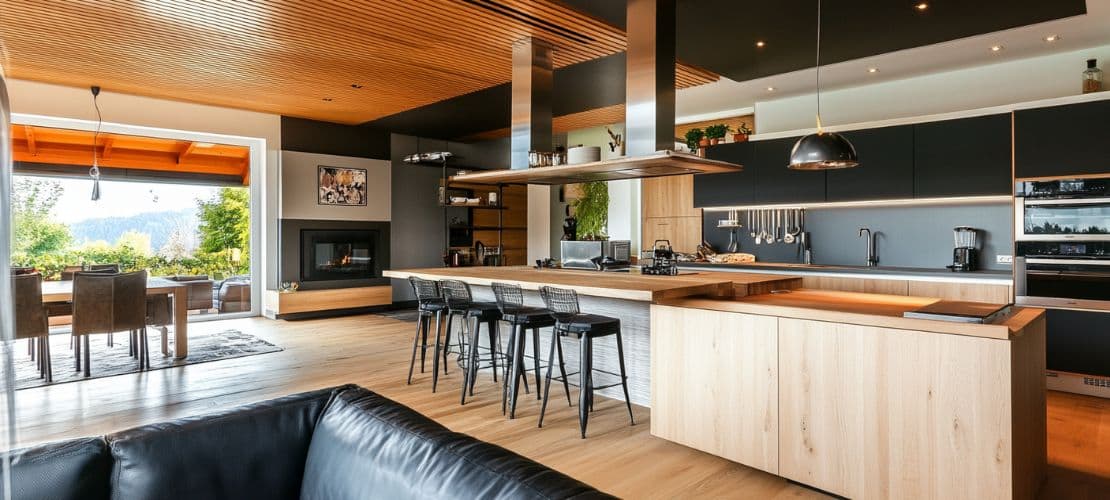
The growing interest in multifunctional furniture is a direct result of modern homes being smaller and excluding purpose-specific rooms like the dining room. This means working with less space to do more.
Although the size of your kitchen and your home, in general, is a major consideration when choosing the right kitchen table for your home, it is not the only consideration, or even the most important factor in your choice. Aspects like style, shape and the material the table is made of are equally important, These and other details will help you filter out beautiful dining tables from your home's perfect kitchen dining table. In this feature, our designers have put together advice on what makes a good kitchen dining table, and how to select one that suits your home.
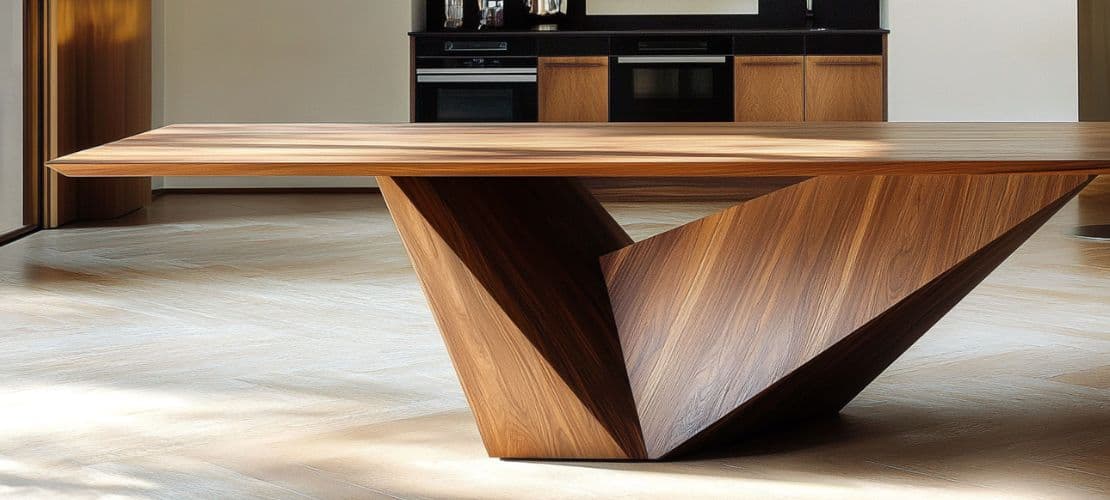
In modern homes, our furniture choices are overwhelmingly based on the size of our homes, most of which are considerably smaller than the homes of bygone times. With this in mind, modern luxury is defined less by the amount of space you have and even more so by how much comfort and convenience your space brings you. A kitchen dining table is a great example of this, although many contemporary homes do not have designated dining rooms the need for a dining surface has not disappeared, making a kitchen dining table more than a ‘nice to have’, and more of a necessity.
Here’s how to decide what dining table would be best for your kitchen and kitchen dining area based on your home, your style and your primary intended use for your table.
Is there a difference between a dining table and a kitchen table?
Aside from their traditional placement in the home, there is not much else setting the kitchen and the dining room table apart.
Dining rooms are more elegant and formal, usually reserved for special occasions and guests. Because of this, dining tables were typically more decorative and ornate while the kitchen table would be more sturdy, durable and practical. In the modern home, however, the kitchen table can and often does double as the dining table, which allows for a more luxurious and ornate dining table in your kitchen.
The seating in your kitchen dining area can also vary from kitchen dining benches to upholstered dining chairs and even modern kitchen chairs. The chairs you select can act as style accents, and can serve as transitional features to tie your kitchen and dining area motif together, especially when the table does not obviously tie into your kitchen decor.
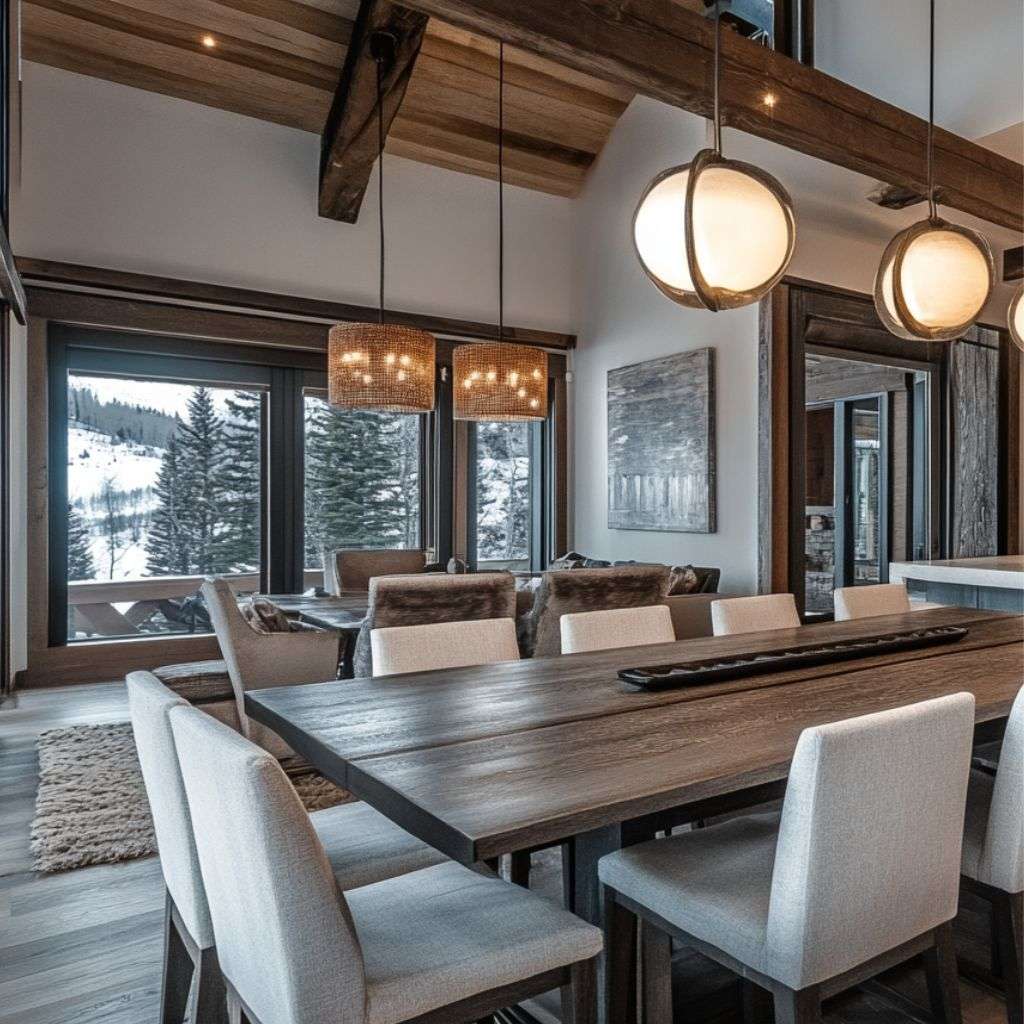
While there is no real difference between the kitchen and dining table, there are some practical considerations you need to make in your kitchen dining area that you wouldn’t have to make in a separate dining room:
Whether your table hinders the functioning of your kitchen.
If it is likely that hot pots or dishes will be put on the table, you should take into account how heat resistant the table is.
Kitchen tables usually get more utilitarian usage than formal dining tables. Durability of the construction and material, therefore, becomes a more important consideration for a kitchen dining table.
Dining tables are the focal feature of a dining room, and are generally tied into the larger interior design of your home. As kitchen tables are often later additions, it can be more difficult to match a style, so a complementary or contrasting design might be something to consider, something an experienced interior designer would be able to assist with.
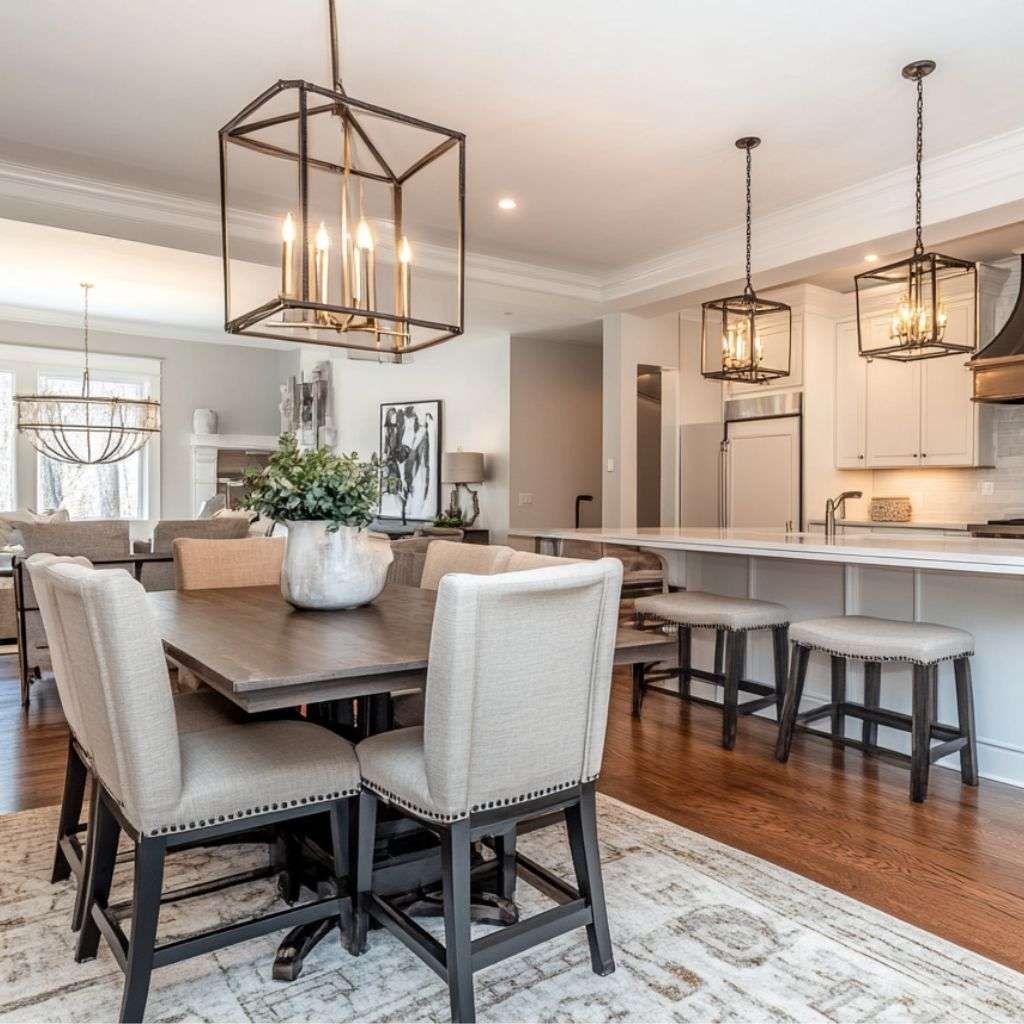
The most common material for kitchen and dining tables is wood. Solid wood is considered the best and most durable choice, though there are a wide variety of woods to choose from, with styles to suit every aesthetic. Another popular choice is a glass topped table, which has the benefit of being reflective, which helps carry light into the space, and creating the appearance of a more spacious space.
When choosing your table, consider the rest of your kitchen. A monochromatic kitchen or one where the cupboards and the kitchen match the table highlights thoughtful design while contrasting kitchens and tables can create depth and visual interest.
Kitchens are typically high-traffic areas, and leaving as much space for movement as possible is key to having a functional kitchen while incorporating a dining area.
The right-sized table allows your kitchen to continue to be functional even when your table is full. This is especially important when your kitchen table is placed centrally within the kitchen. The table and chair backs should be at least 90 cm away from your wall, in addition to the space required to open and close your cupboards without obstruction.
The optimal size can vary depending on available space, and in some cases, a custom or bespoke table may be the best option to fit your kitchen perfectly.
Round, oval, square and rectangular tables are popular and have more seating built to suit them than organic shapes or irregular shapes, which may require non-standard seating or more careful consideration of the type of chairs you select.
For kitchens that are as wide as they are long, square and round tables are a natural choice, while narrow kitchens are better suited to rectangular and oval tables. Matching the shape of your table to the shape of your kitchen makes the room visually cohesive while also making the best use of space.
Where you place your kitchen table can affect your size choice and how functional it is. Tables that are placed against a wall can make more room in your kitchen but leave you with less seating around the table. Tables at the centre of your kitchen will have to accommodate movement around the kitchen.
A designated dining area in your kitchen or even a kitchen nook creates the ideal place for your kitchen table with room for chairs and a comfortable dining experience with all the benefits of an eat-in kitchen.
Kitchen chairs are typically plain, simple and unupholstered. This is because cooking is bound to release aromas and other particles into the air, which can easily be absorbed by upholstery. Since the kitchen has primarily been seen as an area for meal preparation, comfort and social setting were seen as an afterthought. However, a modern kitchen and dining area is a full multi-functional space with both the practical and aesthetic value of furniture considered.
Dining chairs, as opposed to traditionally sparsely designed kitchen chairs, can add comfort, luxury and elegance to your kitchen, but consider the distance between the areas used for cooking and the airflow within the whole room before you make a purchase.
Extendable tables are a great way to have your bread buttered on both sides. In your day-to-day life, you can benefit from having more space in your kitchen and a smaller table that takes up less space, while being able to accommodate more seating by extending your table. Extendable tables are best suited to the kitchen with intermediate space, or where the kitchen is designed as a thoroughfare for other parts of the home.
An extendable table, however, is pointless if you do not have the space to accommodate it at its maximum extension. Storage and maintenance may also be a concern for an extendable table and chairs if the entire area, or set of chairs, is used unevenly over time. You would do well to rotate the chairs in use, and occasionally extend your table to make sure the surface wear stays even.
A fixed table is the best option when space is either limited, or abundant, as both situations render the ability to extend your table obsolete. An extendable table is not the best option for every home, though the novelty, ingenuity and design appeal can be tempting.
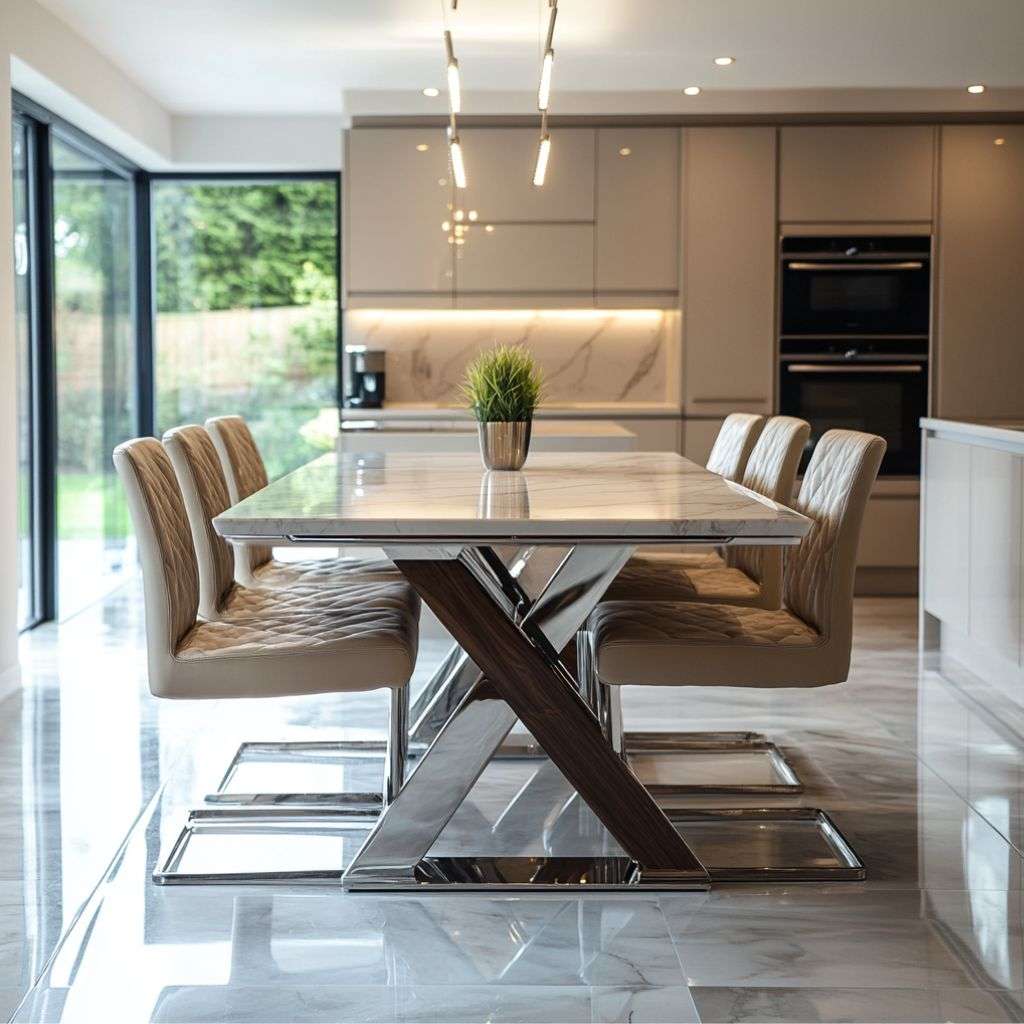
FCI London has the biggest furniture showroom in London With a wide range of luxury, designer tables suitable for your kitchen, dining room and kitchen dining areas.
Our assortment of tables includes sizes from small and intimate two-seater tables to grand and even extendable eight-seater tables with the option to customise it for even bigger tables or smaller space-conscious tables.
We offer free expert consultation with our in-house interior designers who can guide you through our extensive collection and the probability that you’ll not only find the perfect table for your kitchen but also a table you will love for many years to come. Our definition of luxury is tied to the quality of our furniture built by master artisans from top-of-the-range materials ensuring comfort, style and the assurance that your furniture was built and curated with your pleasure in mind.
Visit our showroom for a unique luxury experience like no other filled with inspiration and all you’ll need to make your interior design and decorating dreams a reality.
Our professional team is available to help you with every step of your decor project. Book a personalised visit and let's get the ball rolling on your new dining room design.
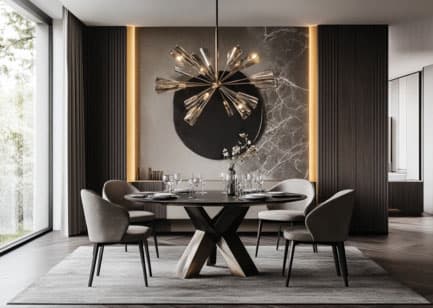
Transparency's kind of our thing.
Here's what real customers have to say about us.
